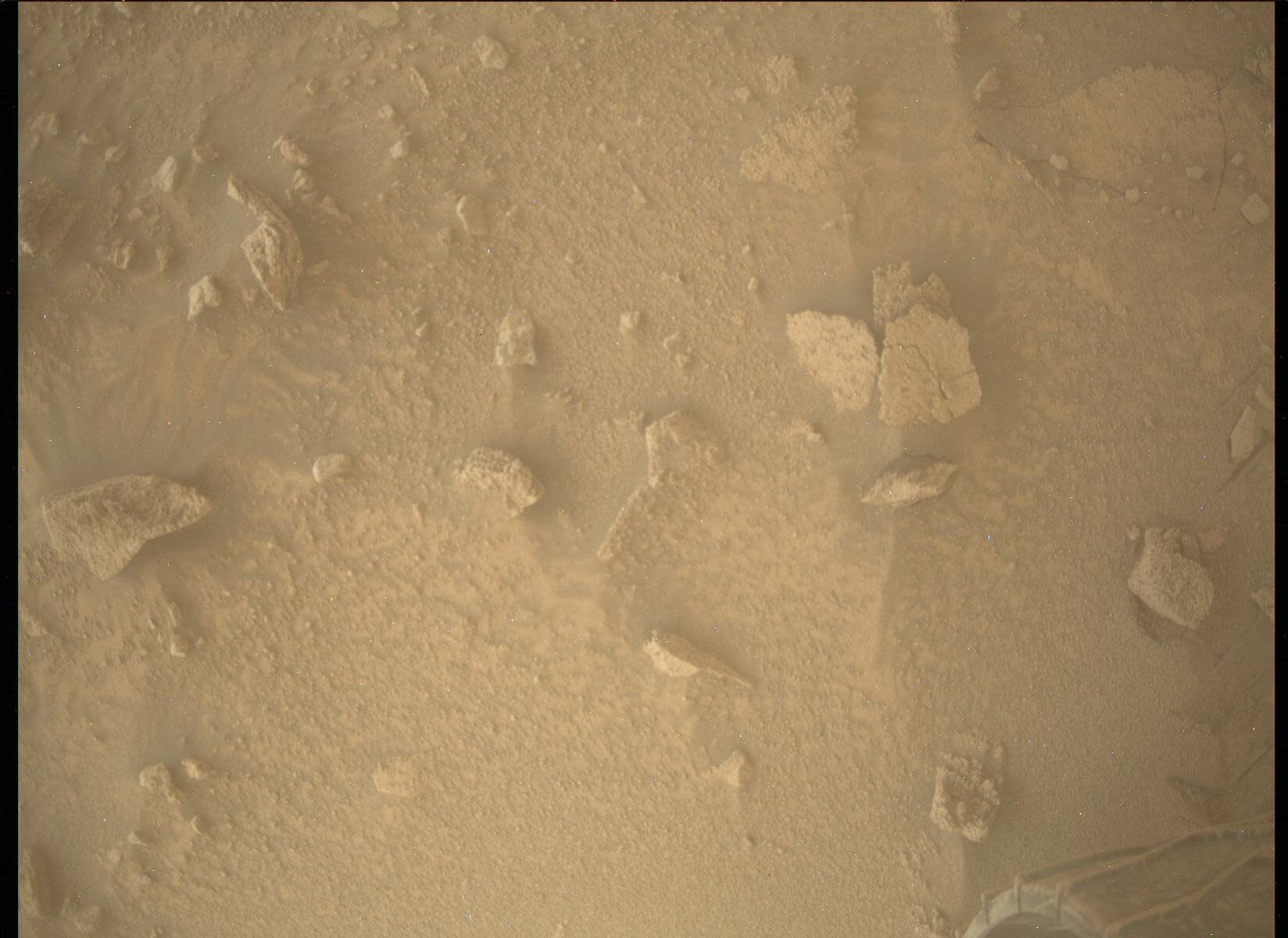4 min read

Today’s plan is chock full of goodies! We start out sol 3546 with a ChemCam observation of a sand ripple “Deposito” and an RMI observation of the Bolivar outcrop in the distance. Then we’ll do some Mastcam observations of Deposito, “Lilas” which is one of our robotic arm targets later in the sol, Bolivar, and “Deepdale.” Once all that wraps up, we’ll get into our robotic arm activities for the sol!
Today I (Keri) was the Arm Rover Planner, which means I was responsible for writing up the commands for the robotic arm activities in this plan. The original plan only had one set of MAHLI observations, but when I loaded up our most recent images in the morning, I noticed this lovely rock in our workspace. The top of it looked like a nice large flat spot where we could use our DRT to brush off some dust! The scientists also were thinking the same thing and agreed, so we added it to the plan. The scientists are also interested in the rough face pointing at the rover, so we are also taking some MAHLI images of that rough face “Simoni” followed by brushing away the surface dust on the top of the rock with DRT and taking some MAHLI and Mastcam images of Lilas.
Once the arm activities wrap up, we’ll begin driving! Our Mobility Rover Planner responsible for driving today just received their Martian driver’s license a few weeks ago, so today they’re getting to enjoy it by driving about 34 meters in some tricky terrain! We are driving in some terrain that could potentially make it more difficult to talk to Earth, in part because the tall hills we’re driving past block sections of the sky where Earth or the orbiters are visible. To make sure we maintain good lines of sight, they worked closely with some of the rover engineers to assess our communications with Earth and the Mars orbiters along with working with the Surface Properties Scientist that provide guidance on what type of rocks and terrain types are safe to drive over and which to avoid. There can often be a lot to juggle when driving a rover on Mars, so this is why we always work as a team!
During the drive, the science team decided to add in an observation that we don’t often use: a MARDI sidewalk observation. MARDI is a camera that is pointing down at the ground. Its initial purpose was to take pictures while MSL was landing on Mars, but now we use it to take pictures of the ground beneath the rover (the image shows a recent MARDI observation). A MARDI sidewalk observation is when we take several MARDI images while Curiosity is driving so we can get a “video” of the ground that the rover is driving across. It is like when you look down while walking along a sidewalk on Earth. The science team is excited for this observation because we are driving across changing terrain. We can’t stop everywhere along the traverse, so obtaining this MARDI sidewalk video will give us close up images of the rocks we drive over. This will help the science team pinpoint exactly when we drive into an area with different rocks. Maybe staring down at the sidewalk while you walk sounds a little boring on Earth, but on Mars it can help us learn more about the changing terrain!
After all that completes, we will take some post-drive imaging with Hazcams, Navcams, and Mastcams which will help the next planning team determine their activities.
On the second sol, we are doing what we call untargeted science, since the rover will have driven to a new location by the time they occur so we plan science observations that don’t require being in a specific place. First we let the rover autonomously select ChemCam targets then use Navcam look to the crater rim to see the dust in the atmosphere followed by looking for dust devils. Later in the sol, Mastcam will do a sky survey observation. The entire plan also includes our standard background RAD, REMS, and DAN observations.
Written by Keri Bean and Kristin Bennett







